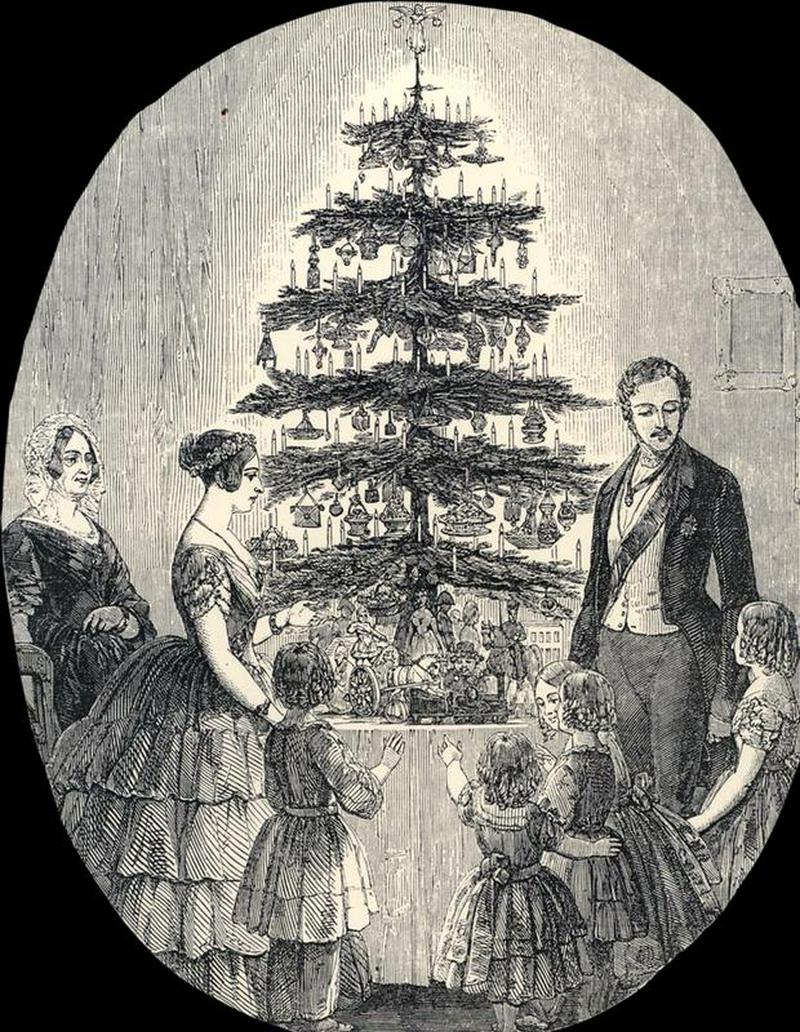The Long History Of The Christmas Tree
By Linda Speckhals | December 21, 2022

The 1930s saw the beginning of artificial Christmas tree production, first using brush bristles; by the 1950s and 1960s, they started to make trees from aluminum and PVC. This was just one more development in the history of the Christmas tree, a history that dates back to the pagans.
Pagan Tree Worship
For the ancient Egyptians, Chinese, and Hebrews, evergreen wreaths, trees, and garlands symbolized eternal life; the pagans in Europe worshiped trees. It is no surprise that these customs continued with the conversion to Christianity. The Scandinavians decorated with evergreens to scare away the Devil, and in Germany, they placed a Yule tree inside the house.
The Paradise Tree
It was in Germany that the modern Christmas tree got its start. One of the medieval plays was about Adam and Eve, and it used a “paradise tree.” On the tree, they hung apples to represent the Garden of Eden. On the religious feast day of Adam and Eve, December 24, they set up a paradise tree in their home, hanging wafers on it as a representation of the eucharistic host, a sign of redemption. Later, they hung shaped cookies. They started to place candles in the tree because of the belief that Christ was the light of the world.
Spreading To North America
Prior to the 16th century, the Germans also had a “Christmas pyramid.” This wooden triangular structure had Christmas figurines adorning its shelves and was decorated with candles, evergreens, and a star. This eventually merged with the paradise tree to become the Christmas tree. By the 19th century, the tradition had become firmly rooted as a German tradition, and it began to spread to England. As early as the 17th century, German immigrants brought the tradition with them to North America, and it was firmly ingrained by the 19th century.

It Came To England With Prince Albert
In 1846, a sketch of Victoria and Albert appeared in The Illustrated London News. This sketch, of the pair and their family standing around the Christmas tree, helped to make the Christmas tree popular in England. In Victorian England, the tree was decorated with toys, gifts, candles, candies, strings of popcorn, and fancy cakes. These were all attached to the tree by ribbons and paper chains. As the Christmas tree tradition continued to spread around the world, Western missionaries took it with them to China and Japan; they decorated their trees with origami birds.
Glass Ornaments
By the late 19th century, small workshops in Germany and Bohemia were producing blown glass ornaments which were being sold in Great Britain and the United States. Some of these German glass ornaments were shaped like fruits and vegetables. A story started to circulate that the Germans hung a pickle as the last ornament, and the first child to find the pickle received an extra gift. However, when Germans were asked about this, no one had heard of it, so it is often assumed that the story was created by a clever salesman. They produced other decorations, including items made from cast lead, beads, pressed paper, and cotton batting. By 1890, F.W. Woolworth had annual ornament sales of $25 million. German-Americans continued to use apples, nuts, cookies, and popcorn.

Lighting The Tree
Some believe that the tradition of lighting the tree also has its roots in Germany, with Martin Luther. According to legend, he was walking home one winter night and saw the stars twinkling through the evergreens. Inspired, he went home and decorated a tree with candles so that he could recreate what he saw for his family.
Different Countries, Different Ornaments
Just like Japan decorates with origami birds, different countries bring their own traditions to the tree adornments. In Denmark, they hang “julehjerte” which are handmade paper hearts made by pleating and weaving red and white paper into a heart shape which is then filled with nuts or sweets. Supposedly, Hans Christian Anderson made one of the earliest ones, and is still in a museum in Odense today. In Scandinavia, they also decorate with a “yule goat,” which dates back to pagan beliefs; these ornaments are often made of straw wrapped with red ribbon.
The Christmas Spider
Another tree tradition, the hanging of a spider ornament or of “spider webs” comes from Ukraine. This ornament called a “pavuchky” has its origin in a story as well, although there are different versions of it. According to one, an impoverished widow lived with her children. Their Christmas tree was bare when they went to bed on Christmas Eve, but when they woke, the spiders had spun webs around the tree. The morning light illuminated the strands to make them glow silver and gold; after this, the family never wanted for anything.